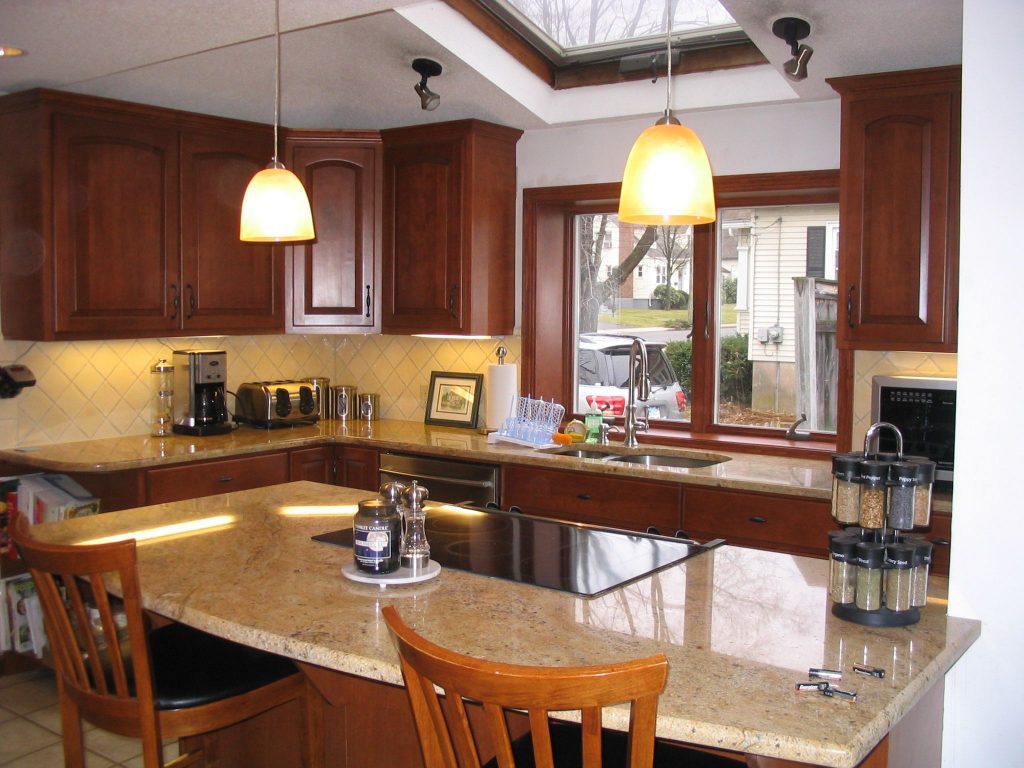The first important thing to consider will remain in your home or move out for the duration of the project. If your project involves any substantial remodeling of existing spaces, I urge you to move to temporary quarters. What do I mean by substantial? Well if it is anything more than painting or floor coverings, the work is significant. Work that involves moving walls, reworking electrical, plumbing or mechanical systems can make your home unlivable. Rent the movie “The Money Pit” and see what I mean. On the other hand, if you have an addition to your home, you may be able to remain and not be overly affected by the work. You should discuss your options with your architect/designer early on in the project.

If you are going to vacate, then move all your belongings out of the areas of work to a secure location. With the contractor in full control of your property, you don’t want things to disappear. You also may realize some savings since the contractor will know his workflow will be uninterrupted.
Contractor Bonding and Permits
A building permit is often required with structural remodeling projects To be sure, check your local requirements. If your contract does not provide that the contractor will obtain the permits and he doesn’t, you may be held legally responsible. Do not get any permit yourself. It’s best to check to ensure your contractor is both licensed and bonded by an A rated carrier. If you do, you will be considered to be the contractor, and you could be held liable if the work does not comply with the building codes.
Notice to Proceed
Before starting work, you should issue a formal “Notice to Proceed.” This will serve to document the official start date for the project and will define the agreed completion date. This is important for several reasons. First, the dates of start and completion are clearly spelled out. Second, many states have time limitations on when Liens can be filed based on those dates. Third, it lets the contractor know you will be monitoring his progress. You don’t want to have to be asking the contractor when he will be done and his answer every time is “two weeks.”
Monitor progress daily
During the work, it is important you visit the work area on a daily basis. The best time is after working hours. This way you can see if the contractor is proceeding promptly. This daily monitoring can alert you early on to potential problems the contractor may have being able to man the job or pay for materials.
Take photos
There is no better way to document progress and problems than by taking photos and lots of them. I suggest you buy a digital camera if you don’t have one and use it every time you visit the site.
Payments

First, on the subject of down payments, my advice to you is making a down payment weakens your position. A qualified contractor should have sufficient resources to fund the construction of the job without advances.
The frequency of progress payment should be defined in the contract usually weekly, bi-weekly or monthly. When the contractor submits his application for payment, the site should be visited, and the application verified against the actual work performed. Here is another instance when having an architect on your team pays many times over. An architect will visit the site, verify the work in place and provide you with a written report. He will also certify the application for payment. With this paperwork in hand, you can feel confident the contractor is not being paid for work in advance. On a personal note, the very first job I monitored early in my career the contractor submitted a payment application with a huge advance he said was for materials he had ordered. I refused to certify the payment. We later found out he was trying to scrape together enough money to pay for his Colorado deer hunting trip the next week!
Retainage
Retainage is another issue to be considered during the contract negotiations and is an important safeguard for you as owner. I recommend 10% be withheld from every payment application. Your architect can advise you on this. The purpose of retainage is simply to keep the contractor interested in finishing the project. There is an old saying in construction that “the last 5% of a job is the hardest to complete”. By the time your project is 95% complete, the contractor has likely started another job. His attention is naturally focused on the job that will make him the most money for that current month. Having an extra 10% keeps him interested in completing your job.
The final payment including retainage is normally not approved until all work has been inspected, all paperwork is turned in, and any requirements of local building officials have been completed.
Inspections
Inspections will occur throughout the project. There will be required local inspections performed by the local building officials. Additional inspections will be performed to certify payment applications and to monitor the progress of the work.
Change Orders
Even with the best plans and specifications, sometimes hidden conditions will be uncovered that will require a change order. These conditions can range from problems with the soils on your site to uncovered substandard construction that must be brought into compliance with current codes. For too many contractors, this is where they plan to make their money by bidding low to get the job and then hitting you with a flurry of inflated change orders. Your architect will assist you in validating any change orders negotiating a true and fair cost.
Also be aware, if you decide to make changes during the work because you don’t like something or want a different material, you will receive a change order and the price will be much higher than if you made the change during the planning stage. Again, proper planning will eliminate or minimize these costly change orders. It is not unusual for a poorly planned project to double in price during construction.